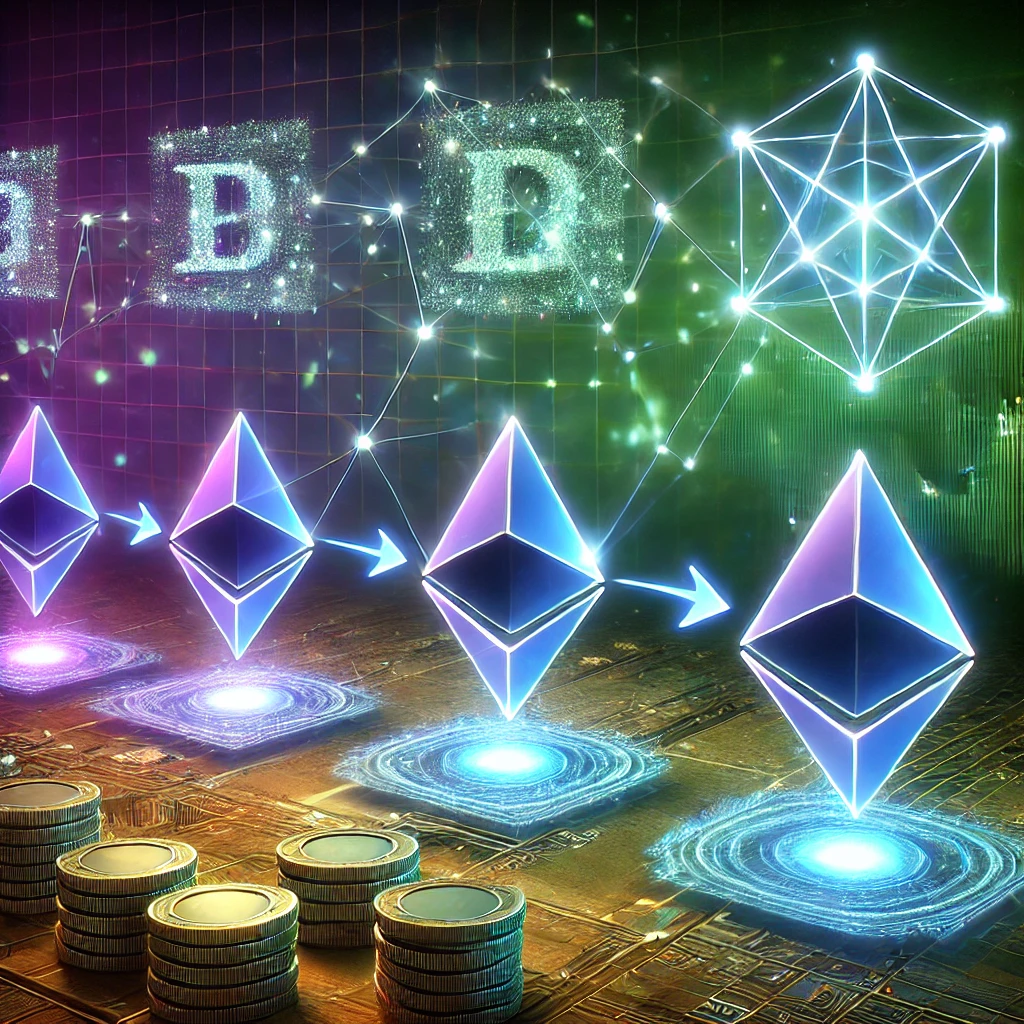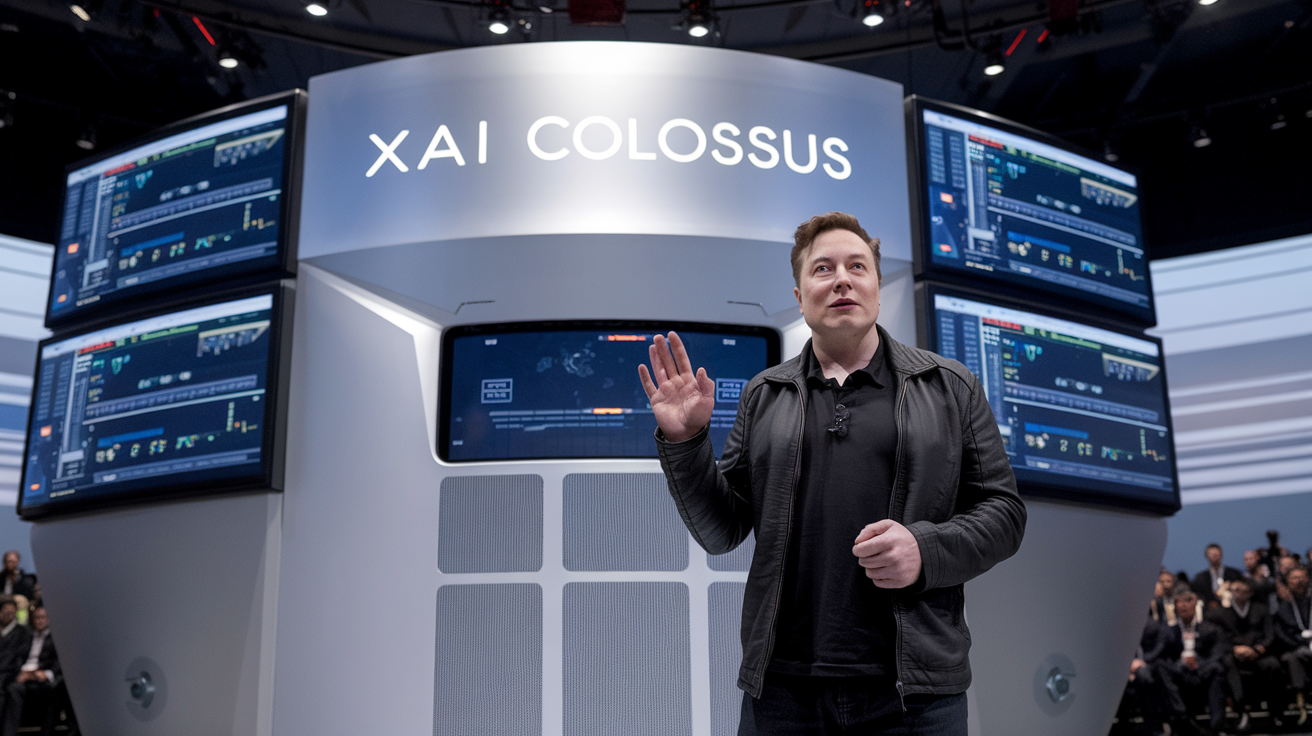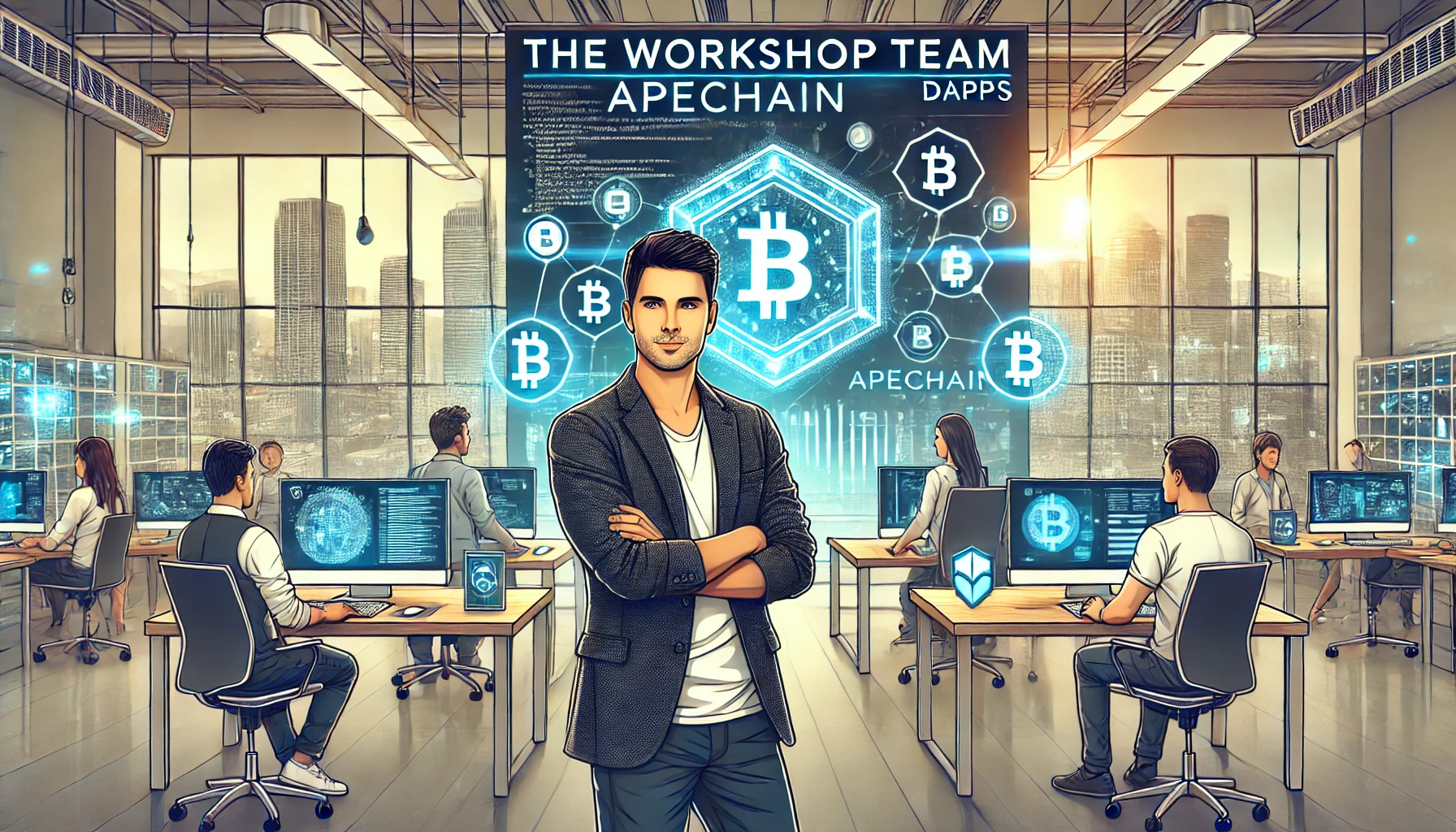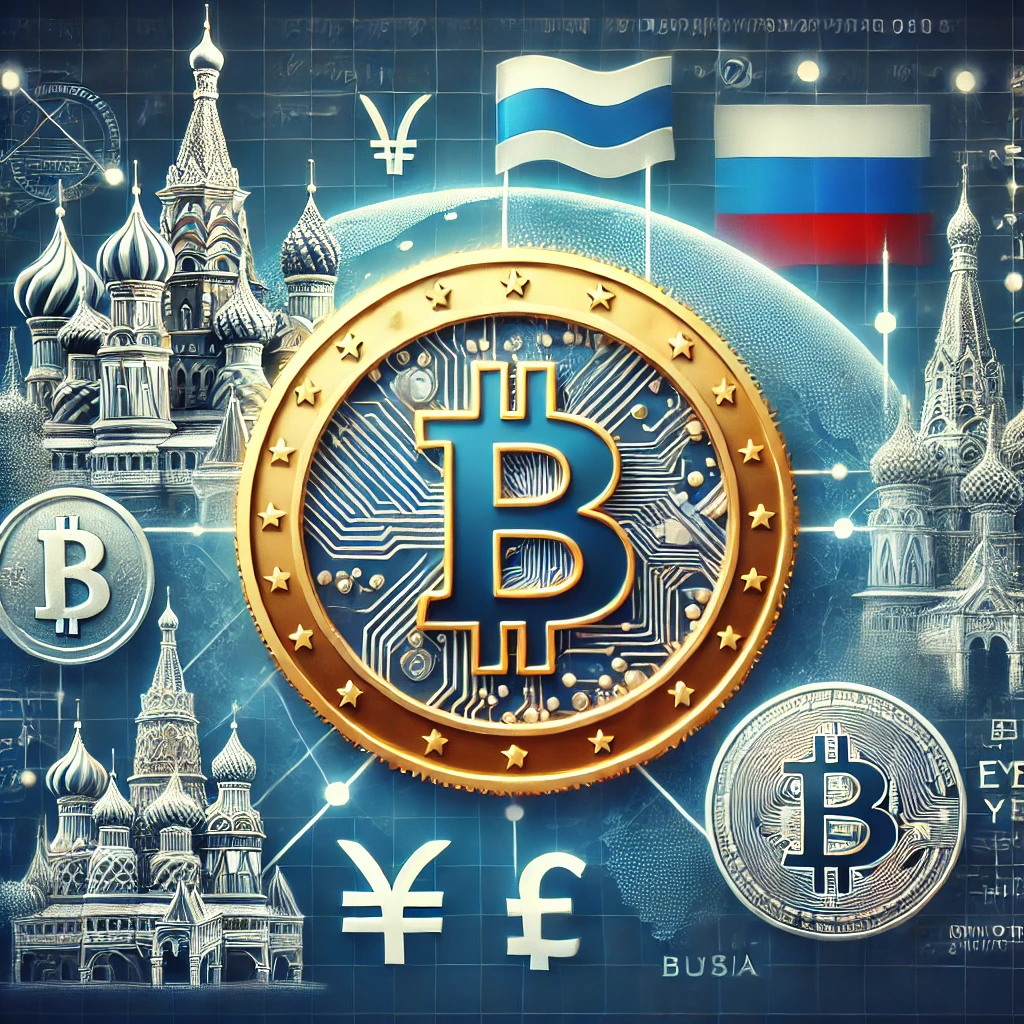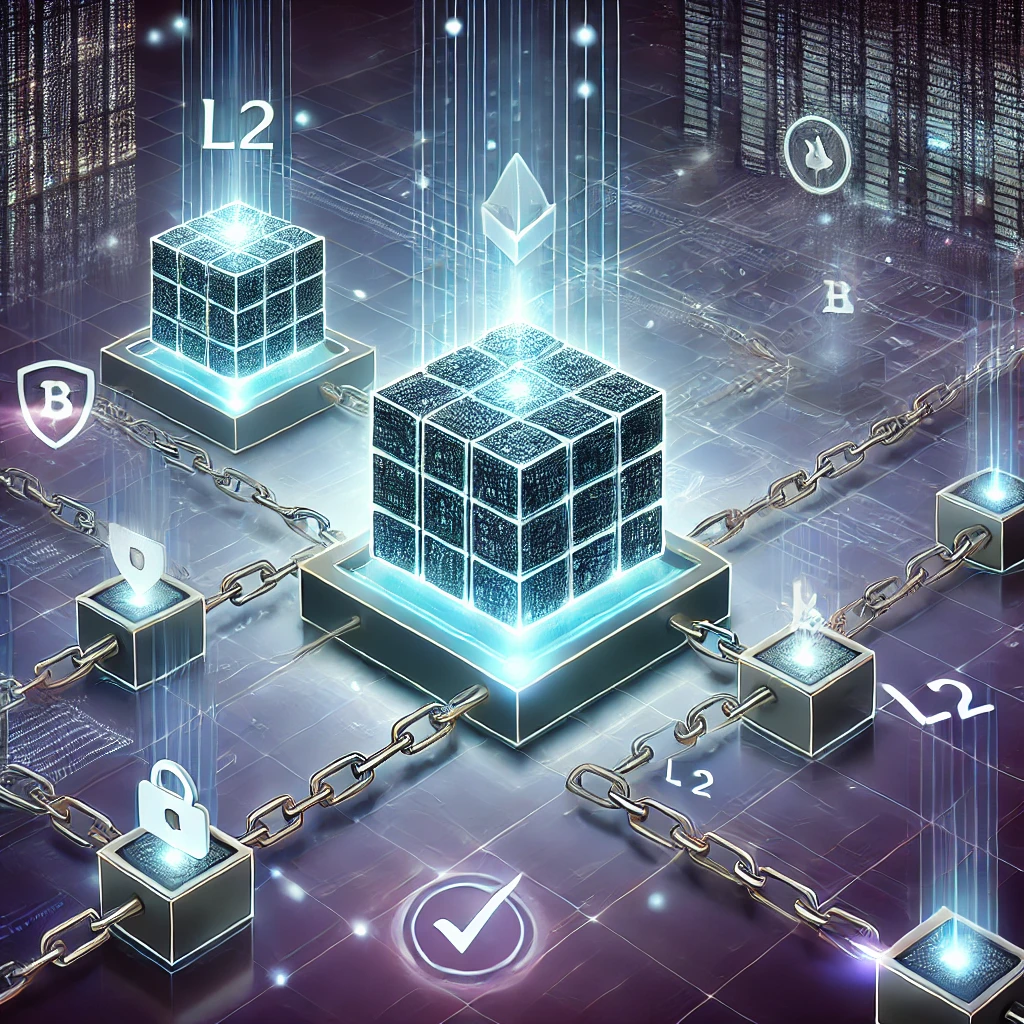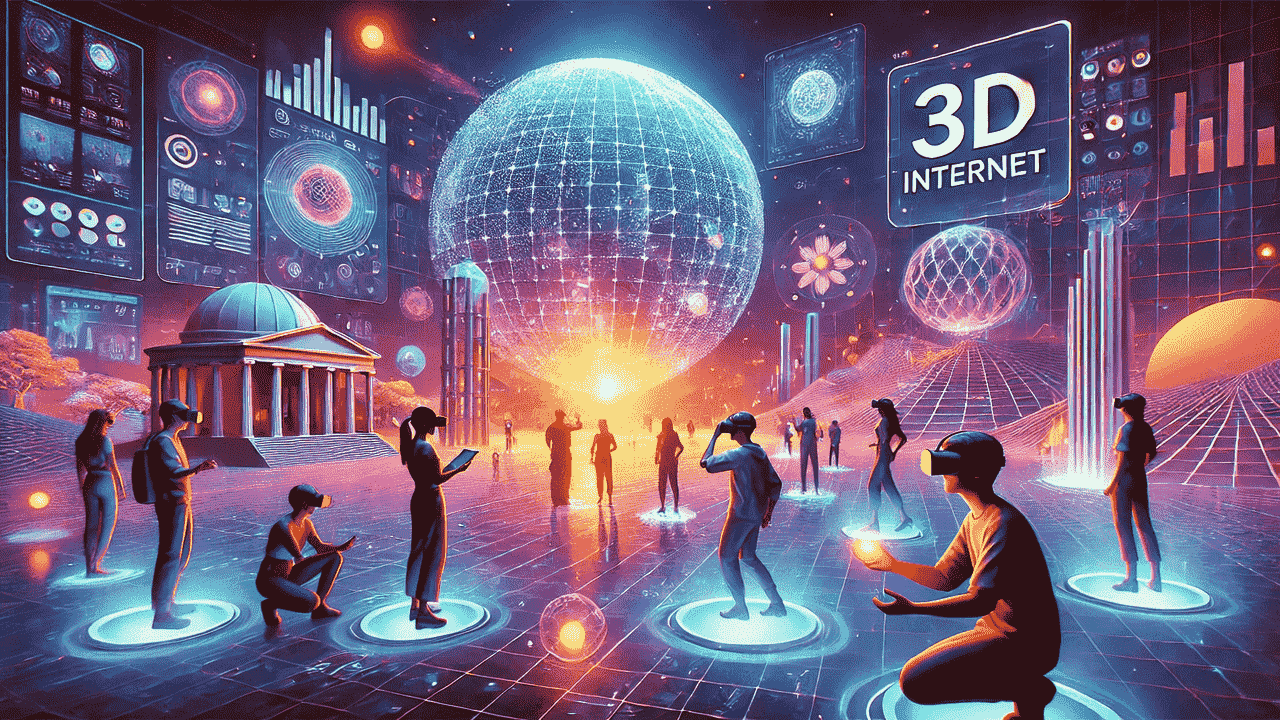
Estimated reading time: 10 minutes
The internet has undergone significant changes since its inception. Initially, it was a simple network for academic and military use, known as ARPANET, which enabled basic text-based communication. As technology advanced, the Internet became the World Wide Web in the early 1990s, allowing multimedia content and more interactive websites. The advent of Web 2.0 in the early 2000s introduced user-generated content, social media, and a more participatory culture. Now, we stand at the threshold of Web 3.0, characterized by decentralized networks, blockchain technology, and the emerging concept of the 3D internet.
Table of contents
Introduction to the Concept of 3D Internet and its Significance
The 3D internet represents the next leap in the evolution of online experiences. It involves immersive environments where users can interact with digital content in three dimensions. This shift promises to transform how we socialize, work, learn, and entertain ourselves. The significance of the 3D internet lies in its potential to create more engaging and realistic experiences, making digital interactions almost indistinguishable from real-life encounters. Technologies like virtual reality (VR) and augmented reality (AR) are at the forefront of this transformation, paving the way for new possibilities in various fields.
What is the 3D Internet?
The 3D internet is a digital environment where users can navigate and interact with content in three dimensions. Unlike the traditional 2D web, confined to flat screens and static interfaces, the 3D internet offers depth, spatial awareness, and dynamic interaction. This environment is created using technologies such as VR and AR, enabling users to experience virtual spaces that mimic the real world or even create entirely new ones.
Also read: How Does Virtual Reality Help to Make Work Experiences More Inclusive
Differences Between 2D and 3D Internet
The primary difference between the 2D and 3D internet is user experience. The 2D internet is limited to flat interfaces and requires users to interact through clicks, taps, and scrolls on a screen. In contrast, the 3D internet allows for a more immersive experience, where users can move through virtual spaces, manipulate objects, and engage with other users in real time. This interaction is facilitated by advanced input methods such as voice commands, gesture recognition, and spatial tracking, providing a more natural and intuitive way to navigate digital environments.
Examples of Current 3D Internet Applications
Several applications already demonstrate the capabilities of the 3D Internet:
- Gaming: Platforms like Minecraft and Roblox have evolved into social spaces where users interact as 3D avatars.
- Education: Virtual classrooms and labs offer students immersive learning experiences.
- Social Media: Virtual environments where users can meet and interact as digital avatars, such as Meta’s Horizon Worlds.
- Shopping: Virtual stores that allow users to browse and purchase items in a 3D space.
- Professional Collaboration: Virtual offices and meeting rooms facilitate remote teamwork with a sense of physical presence.
Technological Foundations of the 3D Internet
Key Technologies Enabling the 3D Internet
Virtual Reality (VR) and Augmented Reality (AR): VR and AR are the cornerstone technologies of the 3D internet. VR provides a completely immersive digital environment, allowing users to interact with a virtual world as if they were physically present. AR, on the other hand, overlays digital information in the real world, enhancing the user’s perception and interaction with their environment. Devices like Oculus Rift and Microsoft HoloLens are examples of VR and AR hardware that facilitate these experiences.
Spatial Tracking and Sensors: Spatial tracking uses sensors like infrared, accelerometers, and gyroscopes. It accurately detects and interprets the positions and movements of users and objects in a 3D space. This technology is crucial for a seamless, responsive VR and AR experience. It enables the virtual environment to adjust in real-time based on user actions. The precision of these sensors ensures that movements in the virtual world correspond accurately to real-world movements.
Eye-Tracking and Brain-Computer Interfaces: Advanced 3D user interfaces (3D UIs) incorporate eye-tracking technology to determine where users look within the virtual environment. This allows for more intuitive interaction and navigation. Brain-computer interfaces (BCIs) represent the next frontier, enabling direct communication between the brain and digital devices. This could allow users to control virtual environments using their thoughts, significantly enhancing the immersive experience.
Role of Artificial Intelligence (AI) in Enhancing 3D Internet Experiences: AI plays a crucial role in developing and enhancing the 3D Internet. AI can create more responsive and adaptive virtual environments, provide personalized experiences, and enhance the realism of interactions within these environments. For instance, AI can drive non-player characters into virtual worlds, making them behave more naturally and interactively. Additionally, AI can help process large amounts of data generated in real-time, ensuring smooth and immersive experiences.
Also read: Understanding Supply and Demand Zones: The Powerful Tool for Crypto Trading
Benefits of the 3D Internet
Enhanced User Interaction and Engagement: The 3D internet offers a more engaging and interactive user experience. By providing a spatial dimension to digital interactions, users can navigate virtual spaces, manipulate objects, and interact with other users in more natural and intuitive ways than traditional 2D interfaces. This can lead to increased user engagement and a more compelling digital experience.
Improved Data Visualization and Analysis: 3D environments can significantly enhance data visualization, making complex datasets easier to understand and interpret. By representing data in three dimensions, users can gain deeper insights and identify patterns that might be missed in 2D representations. This is particularly beneficial in fields like scientific research, engineering, and business analytics, where visualizing data spatially can lead to better decision-making.
More Immersive and Realistic Experiences: The 3D internet provides more immersive and realistic experiences in various domains, including gaming, education, and social interaction. In gaming, players can experience virtual worlds with a level of immersion that traditional games cannot match. In education, virtual classrooms and labs can offer hands-on learning experiences that are both engaging and effective. Social platforms in 3D allow for more natural and interactive communication, creating a sense of presence and connection among users.
Potential for Better Accessibility Through Voice and Gesture Controls: The 3D internet can improve accessibility for users with disabilities. Voice recognition and gesture controls offer hands-free interaction with digital content, making navigating and using online services easier for people with mobility impairments. These technologies enhance the user experience by providing intuitive and natural ways to interact with digital environments.
Applications of the 3D Internet
Gaming: How 3D Internet is Revolutionizing the Gaming Industry
The gaming industry is one of the most significant beneficiaries of the 3D internet. With the advent of VR and AR technologies, gamers can now experience highly immersive environments that were previously impossible. Games like “Minecraft” and “Roblox” have evolved into platforms where users interact as 3D avatars, creating virtual societies that mimic real-world interactions. These platforms provide entertainment and foster social connections and creativity among users. Additionally, VR headsets like the Oculus Rift offer a more immersive gaming experience, making players feel as if they are physically present in the game world.
Education: Virtual Classrooms and Interactive Learning Environments
The 3D internet transforms education by creating virtual classrooms and labs offering interactive learning experiences. These environments allow students to engage with educational content in ways that traditional classrooms cannot. For instance, medical students can perform virtual surgeries, and history students can explore ancient civilizations in 3D. This hands-on approach to learning enhances comprehension and retention of information. Platforms like Engage VR and AltspaceVR are already used to conduct virtual classes and seminars, providing students with a rich, interactive learning environment.
Social Media: Virtual Avatars and New Forms of Online Interaction
Social media is evolving with the 3D internet, introducing virtual avatars and new forms of interaction. Users can now meet in virtual spaces, attend events, and socialize as digital representations of themselves. Platforms like Meta’s Horizon Worlds and VRChat offer users the ability to create and customize avatars, engage in social activities, and even build their virtual environments. This shift enhances the sense of presence and connection, making online interactions more engaging and lifelike.
Shopping: Virtual Stores and Augmented Shopping Experiences
The retail sector also benefits from the 3D Internet through virtual stores and augmented shopping experiences. Customers can now browse and purchase products in a 3D space, try on clothes virtually, or view items from all angles before making a purchase. This not only enhances the shopping experience but also helps reduce return rates by providing a more accurate representation of products. Companies like IKEA and Amazon are already leveraging AR technology to offer such experiences to their customers.
Professional Collaboration: Virtual Offices and Remote Teamwork
The 3D internet facilitates professional collaboration by creating virtual offices and enabling remote teamwork. These virtual environments allow team members to work together as if they were in the same physical space, regardless of their geographical locations. Tools like Spatial and Microsoft Mesh provide platforms for virtual meetings, brainstorming sessions, and project collaborations, enhancing productivity and fostering a sense of presence among team members. This capability is particularly valuable in a post-pandemic world where remote work has become the norm.
Also read: What is MetaMask and How Does it Work
Challenges and Considerations
Technical Challenges: Hardware Requirements and Internet Speed
One of the primary challenges of the 3D internet is the hardware requirement. High-quality VR and AR experiences demand powerful computing devices and advanced headsets, which can be expensive and inaccessible to many users. Additionally, these technologies require high-speed internet connections to function smoothly, which can be a barrier in areas with limited internet infrastructure.
Usability Concerns: Learning Curve for New Users
The 3D internet introduces a steep learning curve for new users unfamiliar with VR and AR technologies. Navigating and interacting in a 3D space can be complex and may require users to learn new skills and adapt to new ways of interaction. This can be a deterrent for those who are less tech-savvy or resistant to change.
Privacy and Security Issues: Data Protection in Immersive Environments
Privacy and security are significant concerns in the 3D internet. The immersive nature of VR and AR means that more personal data is being collected, including biometric data like eye movements and physical gestures. Protecting this data from misuse and ensuring user privacy is crucial. Additionally, the risk of cyber-attacks and unauthorized access to virtual environments poses a security threat that needs to be addressed.
Economic and Societal Impacts: Potential Job Displacement and New Business Models
The rise of the 3D internet may cause economic and societal changes, including job displacement. Traditional roles might become obsolete or automated. However, it also presents new business models and job creation opportunities. Emerging fields like VR development, digital content creation, and virtual event management will benefit. Policymakers and businesses must navigate these changes carefully to minimize negative impacts and maximize societal benefits.
Conclusion
The 3D internet will transform gaming, education, social media, and professional collaboration. It offers immersive, interactive experiences that enhance user engagement and data visualization. Technologies like VR, AR, spatial tracking, and AI drive this transformation. However, adoption faces technical requirements, usability concerns, privacy issues, and potential economic impacts. Addressing these challenges is crucial for realizing the benefits of the 3D internet. Ensuring it integrates seamlessly into our daily routines is essential.
Also read: Who Controls Bitcoin?
FAQs about the 3D Internet
The 3D internet refers to a digital environment where users interact with content in three dimensions, unlike the traditional 2D internet, which is confined to flat screens. The 3D internet offers more realistic simulations, enhanced data visualization, and interactive environments.
Key technologies for the 3D internet include:
Virtual Reality (VR) and Augmented Reality (AR): Create immersive and interactive virtual environments.
Spatial Tracking and Sensors: Enable precise tracking of user movements and positions in 3D space.
Eye-tracking and Brain-Computer Interfaces (BCIs) Allow intuitive control and interaction based on user gaze and thoughts.
Artificial Intelligence (AI): Enhances realism and responsiveness of virtual environments by processing large amounts of data in real time.
The 3D internet transforms gaming by providing highly immersive environments where players can interact as 3D avatars. Platforms like Minecraft and Roblox have evolved into social spaces with virtual worlds that mimic real-life interactions.
The 3D internet creates virtual classrooms and labs that offer interactive learning experiences in education. Students can engage with content in ways traditional classrooms cannot, such as performing virtual surgeries or exploring historical sites in 3D.
Technical Challenges: High-quality VR and AR experiences require powerful hardware and fast internet connections, which can be expensive and inaccessible to many users.
Usability Concerns: The steep learning curve for new users unfamiliar with VR and AR technologies can deter adoption.
Privacy and Security Issues: The immersive nature of the 3D internet involves collecting extensive personal data, including biometric information, raising privacy and security concerns.
Related posts
Discover more from The African Crypto
Subscribe to get the latest posts sent to your email.



